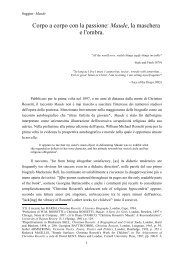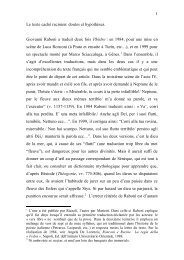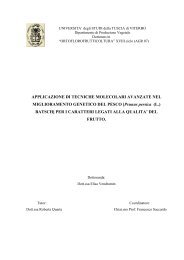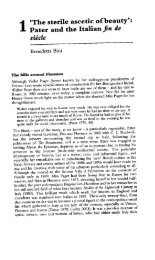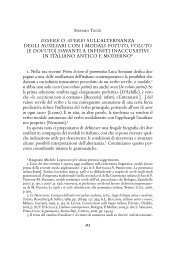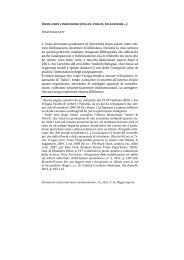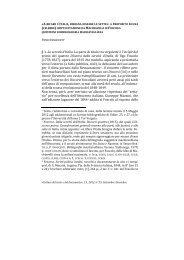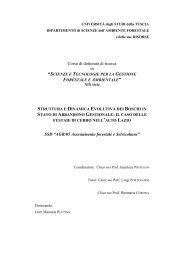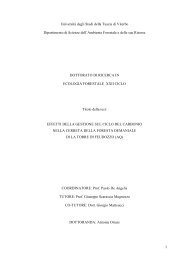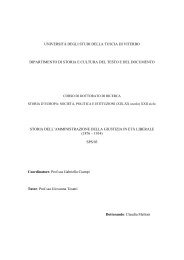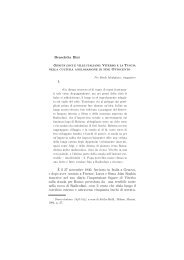drivers of soil respiration of root and microbial ... - Unitus DSpace
drivers of soil respiration of root and microbial ... - Unitus DSpace
drivers of soil respiration of root and microbial ... - Unitus DSpace
Create successful ePaper yourself
Turn your PDF publications into a flip-book with our unique Google optimized e-Paper software.
explain diurnal <strong>and</strong> seasonal changes in <strong>root</strong>-derived <strong>respiration</strong>. Laboratory experiments with a<br />
single plant species have shown however that the observed time lag is not stable during the plant<br />
ontogenesis, <strong>and</strong> vary depending on the plant growing stage. The same photosynthetic activity<br />
could also result in different magnitude <strong>of</strong> <strong>root</strong> <strong>respiration</strong>, depending on the type <strong>of</strong> nutrient supply<br />
(ex: N in form <strong>of</strong> NH + 4 or NO - 3). All these finings suggest that <strong>root</strong> <strong>respiration</strong> is a complex<br />
process, tightly coupled to plant canopy activity <strong>and</strong> could not be explained simply by changes in<br />
<strong>soil</strong> temperature <strong>and</strong> moisture. Further studies are needed to verify the bonds between aboveground<br />
<strong>and</strong> belowground processes for different species <strong>and</strong> vegetation types, as well as for various plant<br />
growing stages.<br />
4<br />
Soil temperature <strong>and</strong> <strong>soil</strong> water content exerted a significant effect on <strong>microbial</strong> component<br />
<strong>of</strong> <strong>soil</strong> <strong>respiration</strong>. Being a larger part <strong>of</strong> total CO2 efflux from <strong>soil</strong> at Amplero (≈ 70%), these<br />
factors influenced also total <strong>soil</strong> <strong>respiration</strong> dynamic on different time scales. Introduction <strong>of</strong> a<br />
management regime have modified however the activity <strong>of</strong> <strong>microbial</strong> community by an increase <strong>of</strong><br />
the quantity <strong>of</strong> easily available C substrates from the rhizodeposition process, resulting in a general<br />
suppression <strong>of</strong> <strong>microbial</strong> enzymatic activity <strong>and</strong> further decrease C mineralization rates.<br />
Combination <strong>of</strong> laboratory studies <strong>and</strong> in situ measurements is necessary for underst<strong>and</strong>ing <strong>of</strong> the<br />
effect <strong>of</strong> changing substrate quality, nutrient <strong>and</strong> moisture conditions on <strong>microbial</strong> activity <strong>and</strong> its C<br />
use efficiency.




